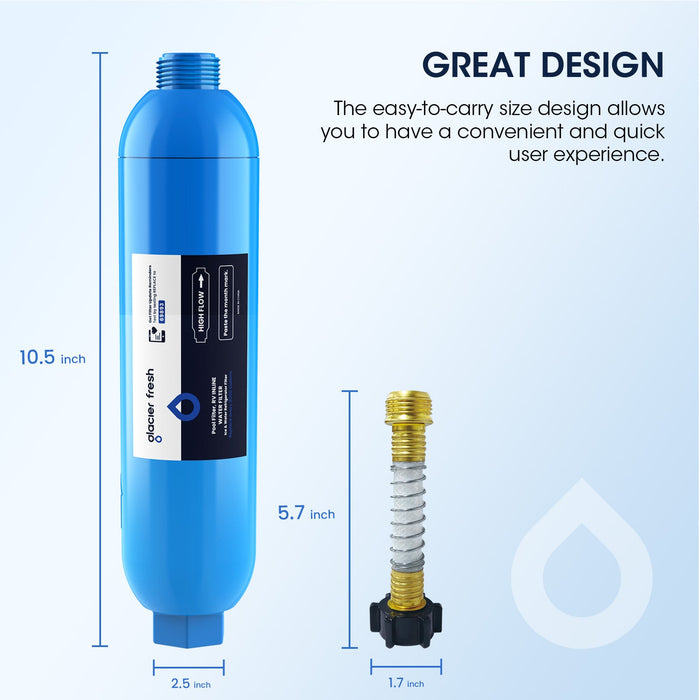Transform Your RV Water Experience: Discover the Secret to Refreshingly Delicious Hydration!
When it comes to RV living, the importance of water quality cannot be overstated. After all, the water we drink and use for cooking, cleaning, and bathing is crucial for our health and overall enjoyment of life on the road. Unfortunately, many RV owners encounter unpleasant tastes in their water, which can stem from various factors. Whether you're parked by a serene lake or exploring the bustling cities, having access to great-tasting water enhances your experience. If you’ve ever taken a sip of your RV water and recoiled at its flavor, you’re not alone. This common issue highlights the need for adjustments to improve the taste profile of your RV’s water, ensuring a refreshing hydration experience wherever your adventures take you.

Understanding the Taste Profile of RV Water
A taste profile refers to the distinct flavors and odors that characterize water. In the context of RV water, several factors can influence this profile. The source of your water—whether it's from a public supply, a well, or a natural body of water—can have a significant impact on taste. Additionally, the materials used in your RV’s plumbing, such as hoses and tanks, can leach substances that affect flavor. For instance, rubber hoses might impart a rubbery taste, while metal pipes can contribute metallic flavors. Storage conditions also matter; water that sits stagnant in tanks for extended periods may develop an off-putting taste. Understanding these elements is the first step in addressing the taste issues and ensuring that your hydration experience is as enjoyable as possible.
Common Issues Leading to Unpleasant Water Taste
Many RV owners face a range of issues that contribute to unpleasant water taste. Contaminants such as sediment, bacteria, and chemicals can infiltrate an RV’s water supply. These can arise from various sources, including poor-quality water intake or inadequate tank cleaning. Additionally, stale water can develop if tanks are not used regularly or if water remains stagnant for too long. This is particularly common during long trips or when RVs are left unused for extended periods. Furthermore, mineral buildup from hard water can contribute to an unpleasant taste and odor, making water taste chalky or metallic. Understanding these common issues is critical for RV owners who want to take proactive steps in improving their water quality and taste.
Techniques and Tools for Adjusting Water Taste
Fortunately, there are several techniques and tools available to improve the taste of RV water. One of the most effective methods is the installation of a filtration system, which can remove impurities and enhance flavor. There are also various additives designed to improve water taste, such as citrus flavoring or mineral drops that can offset unpleasant flavors. Regular maintenance practices, such as cleaning water tanks and inspecting plumbing, can also play a crucial role in ensuring your water remains fresh and tasty. By taking these steps, RV owners can significantly enhance their hydration experience, making every sip a delight rather than a chore.
Choosing the Right Filtration System
When selecting a filtration system for your RV, it’s essential to consider various types available on the market. Carbon filters are popular for their ability to reduce chlorine and improve taste, while reverse osmosis systems provide thorough purification by removing most contaminants. There are also UV filters that kill bacteria and viruses, ensuring your water is safe to drink. When choosing a system, consider your specific needs, such as the quality of your water source and how much filtration capacity you require. Remember that a good filtration system can make a world of difference in your daily hydration routine.
Simple DIY Tips for Better Water Taste
If you're looking for easy and cost-effective ways to improve your RV water taste, there are several DIY tips you can implement. One of the simplest methods is to flush your water system regularly to prevent stale water buildup. You can also add a few slices of lemon or cucumber to your water tank for a refreshing twist that masks any unpleasant flavors. Keeping your water storage tanks clean is another essential practice; a mixture of vinegar and baking soda can help eliminate odors and buildup without harsh chemicals. These small changes can have a big impact on your overall water experience, ensuring that each drink is as refreshing as it should be.
Enhancing Your RV Water Quality
Maintaining a good taste profile for your RV water is essential for enjoying your time on the road. By understanding the factors that affect water taste, addressing common issues, and implementing effective techniques and tools, you can significantly enhance your hydration experience. Whether through high-quality filtration systems or simple DIY solutions, there are numerous ways to ensure that the water you drink is refreshing and delicious. So take action today, and transform your RV water experience into one that delights your taste buds and keeps you hydrated on all your adventures!





